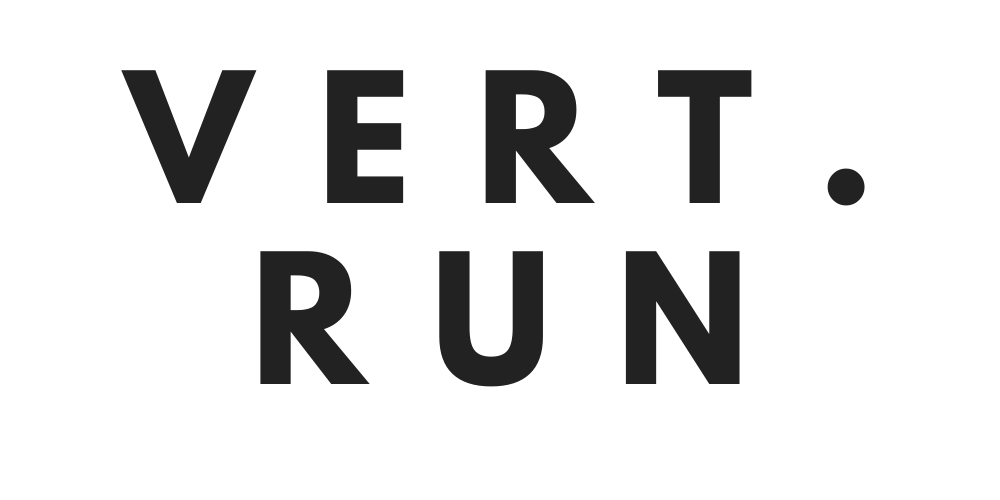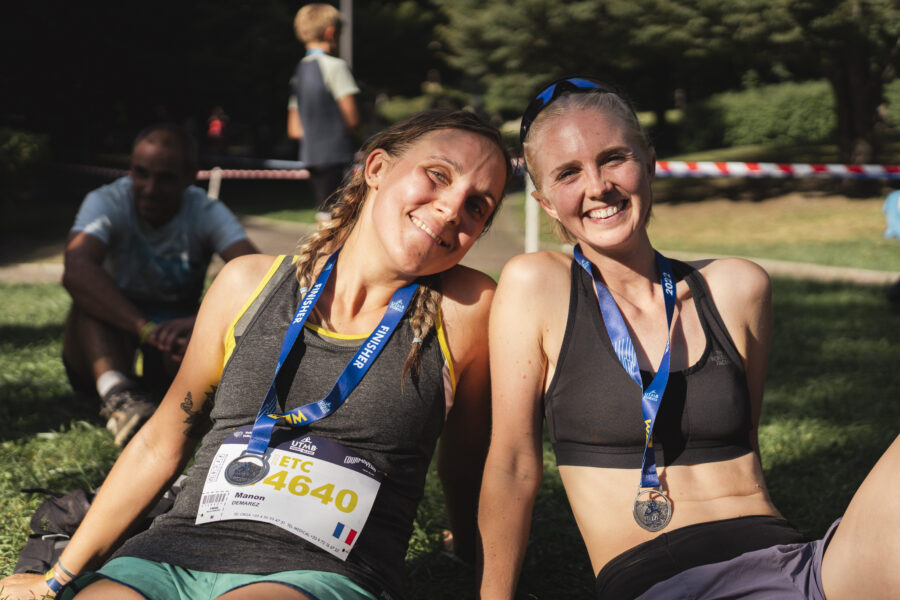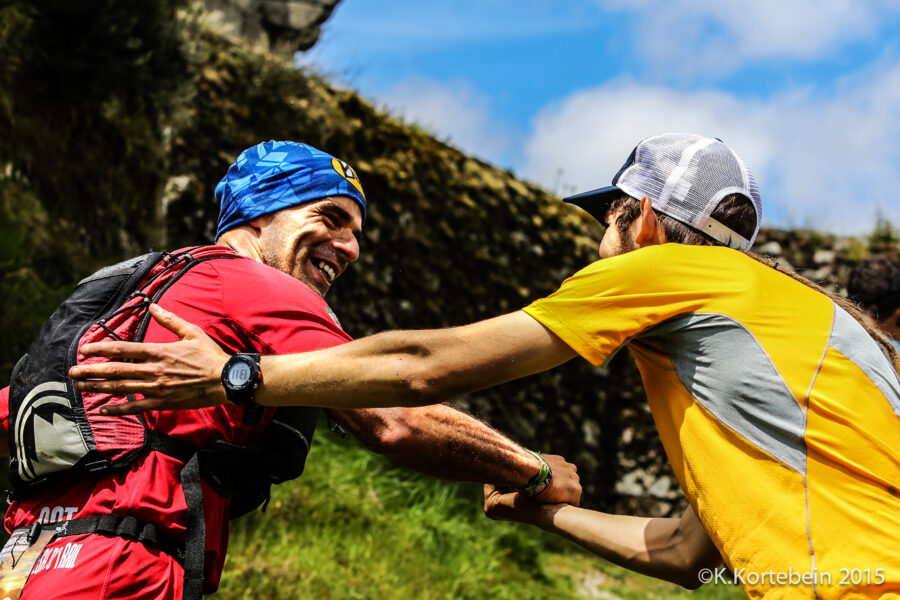Note: The format of this article is a transcript of a podcast episode from our popular trail running podcast “Running Long,” which is hosted by Vert.run coach Francesco Puppi.
You can listen to the podcast here.
In this interview, Francesco (who lives in Italy) interviews Ruth Croft. Ruth Croft is a professional ultrarunner from New Zealand, who is sponsored by Adidas Terrex.
She is also a Vert.run Athlete Partner and has designed two Vert.run training programs. One for racing 50k (“50k: Break your 50k PR“) and one for 50 milers (“50 Miles: Run 50 Miles like Ruth Croft – City Training.”)
Ruth’s race results include winning Western States, winning Tarawera Ultramarathon, and another win at Les Templiers. She definitely deserves a mention among the best female trail runners of our time.
Ruth’s results are built on a mountain of consistency and humble hard work, both on the trails and on the roads.
In this interview, we chat about her approach to training and racing, and her view on the international trail running scene and its development over the past few years.
Ruth has written two training plans for Vert, one designed for a 50k race and one dedicated to trail runners who live in flat cities (yes, you can be a trail runner even if you don’t always have access to the trails…Ruth herself proves it!).
They both have a really good structure and great training tips that can be useful for any trail runners looking to improve his/her performance.
Note: the transcribed version here in this article is a little shorter than the podcast itself. If you want the full conversation (and want to get to know Fran and Ruth! Give the podcast a listen here during your next long run or commute.)
Francesco: Welcome! Today I’m welcoming an incredible Kiwi athlete, professional trail runner for Adidas Terrex, and an awesome friend of mine, Ruth Croft.
Francesco: Many of our listeners already know you, but could you introduce yourself and share a bit about how you started running and racing, and eventually becoming a pro in the sport?
Ruth: I grew up in New Zealand and started running when I was in middle school, doing cross country and track each year. When I was 11 I started at a boarding school and had a teammate who helped me get into one of the running clubs and training groups. After high school, I moved to the US and ran at Oregon for four years, but really fell out of love with running. I eventually moved to Taipei, Taiwan, not related to running, but it was while living in Taipei that I came back to the sport of running and trail running on my own terms. I started doing trail races around Asia and then Europe.
Francesco: I’m curious about your experience in Taiwan. How many years were you there and how did your running journey progress there? What trail races did you do in Asia?
Ruth: I lived in Taipei for about five and a half years and was predominantly running road races, but there was a particular North Face trail race while I was there that I signed up for. I had hoped to do the 15k, but there were only spots open in the 50k, so I went for it and kept developing from there. I would race in China and Japan quite a bit. I definitely recommend going to Japan, their road races are insanely well organized. The Mount Fuji Ascent is an awesome race–it’s 21k.
Francesco: That’s so cool. Then you eventually started doing trail races in Europe and the US around 2017, right?
Ruth: The first time I went to Europe was in 2015, maybe 2016 and ended up running CCC. I ended up leaving Taiwan at the end of 2017 and started coming to Europe every summer.
Francesco: It looks like you have great results at Lavaredo in 2017–second place. Then a course record and win at Ultra Pirineu. In 2018, you went back to some shorter races–was that something you planned or was there a particular reason for that?
Ruth: Even though I got second place at Lavaredo, I had a really terrible experience. I was throwing up and just simply did not enjoy it.
I had gotten caught up in the hype of wanting to run longer, without really asking myself if that’s what I want to do or if that’s what I enjoy. Lavaredo was a good wake up call and ultimately I decided to step back in distance.
Francesco: That’s super commendable to reflect and realize that you weren’t enjoying the longer distances and to change your plan and it seems like that’s been a great choice for you. Now, after racing some shorter distances for a while, you’ve decided to come back to ultras and race at Western States 100 this year. Tell us a little bit about that.
Ruth: Like you mentioned, I spent a few years doing shorter races around the marathon to 50k length and eventually got a little tired of running the same races.
I remember being on a run and thinking about Western States and feeling very motivated and excited about training for and racing 100 miles. Even though they’re both 100 mile races, Western States takes a lot less time than UTMB. I decided on Western States because timewise it’s a lot shorter than other 100 mile races. For example, Western States might take me about 17 hours while a race like UTMB would take over 24 hours. It seemed to make sense for my first 100 mile race and I was lucky to get a UTWT spot so I didn’t have to do a golden ticket race.
Francesco: First of all, did you have fun at Western States?
Ruth: Yeah, I did. I had a really good crew and a really awesome day. I was expecting to hit a few rough patches throughout the day, but it ended up being such a positive experience. The thing I struggled with most was how destroyed my body was after–it was much different from what I had experienced racing shorter races where you can recover quickly. It was a huge learning experience for me in terms of recovery. I had thought I was going to run CCC later in the year, but my body needed more time to rest and recover both mentally and physically.
Francesco: How did you structure your training and preparation for Western States?
Ruth: One part of my training that I think helped a lot was coming to the US six weeks before the race and training on the course. I had just done a 50k the week before I traveled to the US, so I had to take it easy at first, but being out on the course was an excellent way to train for the terrain and gave me the opportunity to do back to back long runs on the weekends on the course.
Francesco: As a professional athlete, do you think it is beneficial for ultra runners to do double sessions in their training where you run in the morning and again in the afternoon? Or is it better to do one larger session for the day?
Ruth: It definitely depends on the athlete, the level they are training at, and the purpose of that extra run.
Is it to get mileage up? Sometimes I do think it can be better to do only one session and recover for the rest of the day versus squeezing in two runs. One thing I’ll point out is that my volume of mileage did not change drastically when training for Western States. I personally don’t think your volume needs to drastically go up–it’s a very fine line that can often lead to more fatigue and less quality sessions.
Francesco: Very interesting. Did you do any cross training while you were training for Western States?
Ruth: No, not really. Normally, in the offseason, in New Zealand, I do a lot of mountain biking and road biking. But when I start doing road running, I bring the biking down to just one or two easy rides a week. The intensity with the road work is quite high that I don’t feel the need to add cross training on top of that.
One thing I do focus on is strength training and typically go to the gym three times a week for about an hour or so.
Francesco: How do you balance road running and trail running? Do you have any advice for our listeners who use the roads to become better at trails and vice versa?
Ruth: I think in your off-season, or in general during your training, it is important to get out and do some flat running to allow the legs to turn over more quickly and get some speed in your legs. I have found that this can help me feel stronger and faster once I get back on the trails.
Francesco: I think that is exactly right and the idea behind your training plans that you wrote for Vert. For example, your 50k training plan that you designed for Vert.run called “Break your 50k PR” is very popular among our athletes. Can you talk a bit more about this training plan?
Ruth: My Vert.run training program has a bit of a base building section and then moving into more steady state kind of work, and then into more tempo sessions and the final periods.
Throughout the program, the sessions include strides and focus on leg turnover to help build your efficiency as a runner. I also wrote a Training for an Ultramarathon While Living in a City program for people who might not have access to certain terrain but still want to train for an ultra. I strongly believe that you don’t need to live in the mountains or have trails at your back door to become a good trail runner.
Francesco: What is next for you? What is your plan for next season?
Ruth: I’ve got a 60k here in New Zealand that I will likely do in January, then the plan is to focus on road again, before moving into training for Western States again. That will be the main focus of the year and I haven’t planned anything for after that.
Francesco: What do you think about the international trail running scene?
Ruth: There are so many different disciplines under trail running and a lot has changed since I started in the sport. I think it’s been cool to see the new races like the Golden Trail series and all the new faces showing up in the sport and really strong runners coming in, which is great.
As the sport grows there will need to be more control and professionalism in terms of rules and anti-doping, etc.
Francesco: Thank you for sharing this. What do you think about the possibility of trail running becoming an Olympic sport?
Ruth: I think as long as it doesn’t change the essence of the sport, it’d be a positive thing. I sound like a bit of a pessimist, but I don’t know if I ever see it really happening.
Francesco: Thanks for taking the time to sit down and chat with us– we wish you a very successful season and a good summer in New Zealand.








